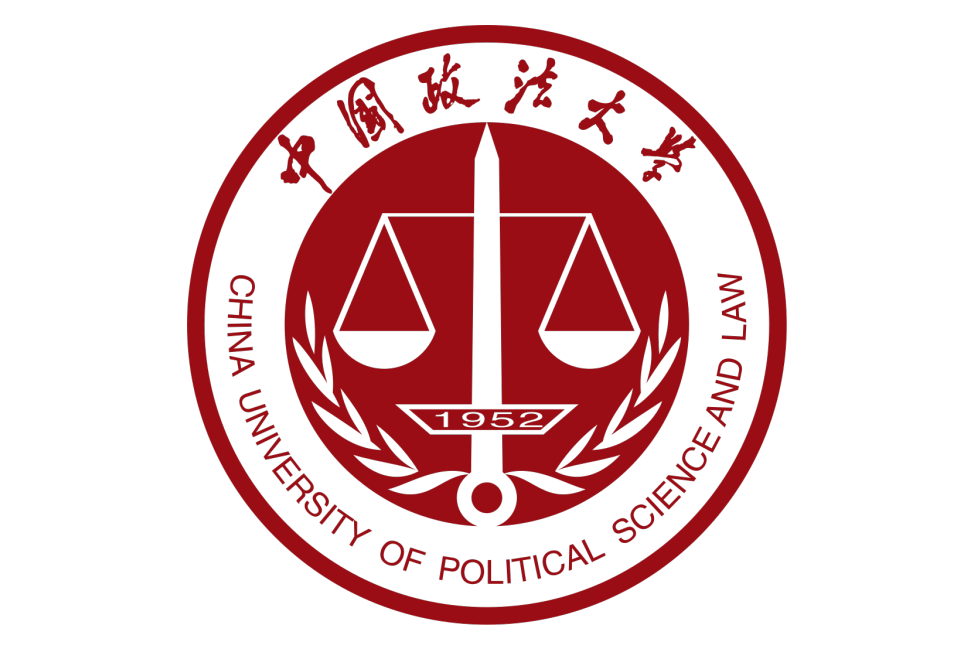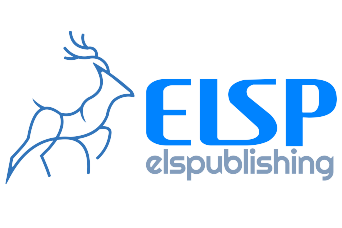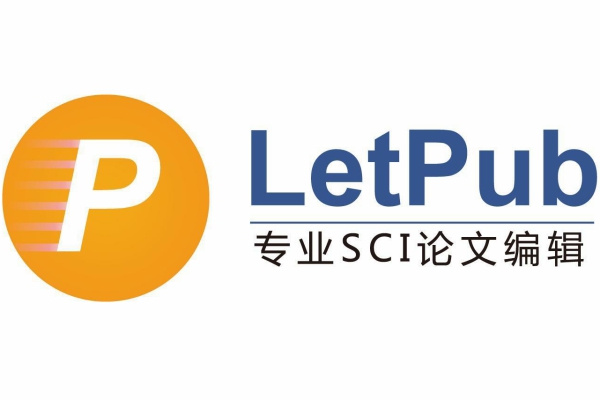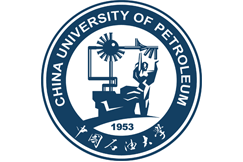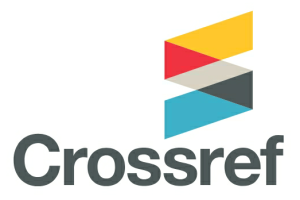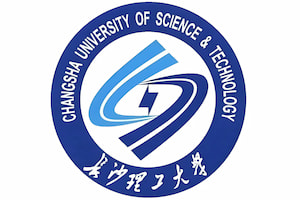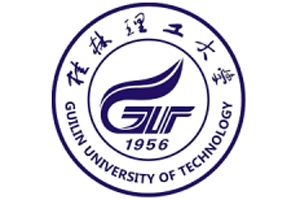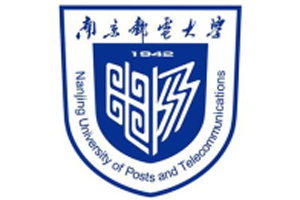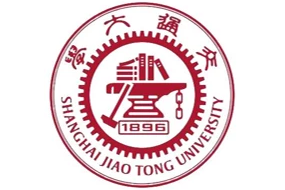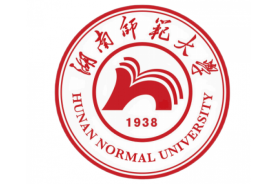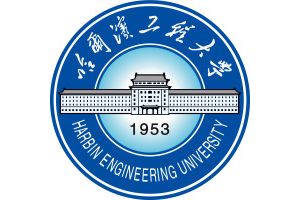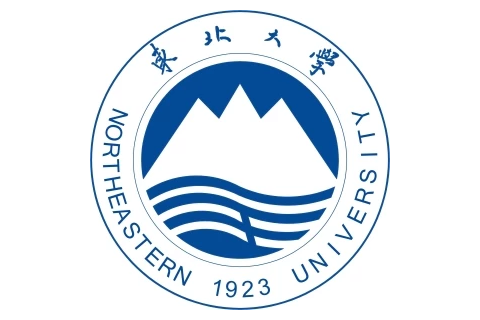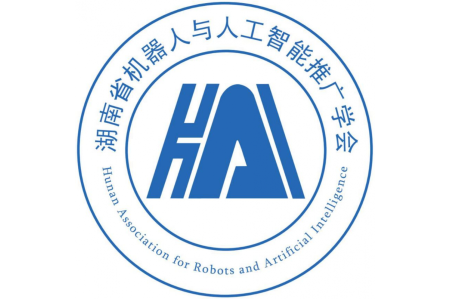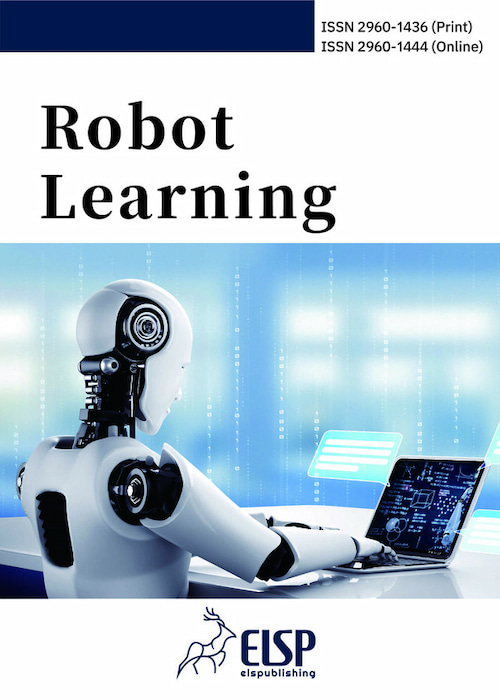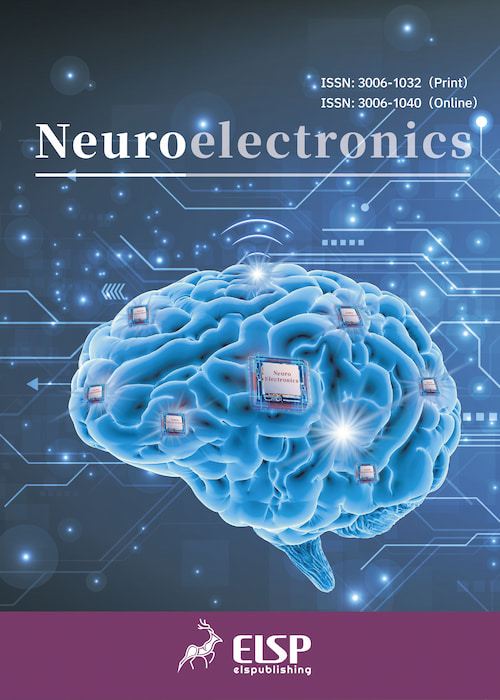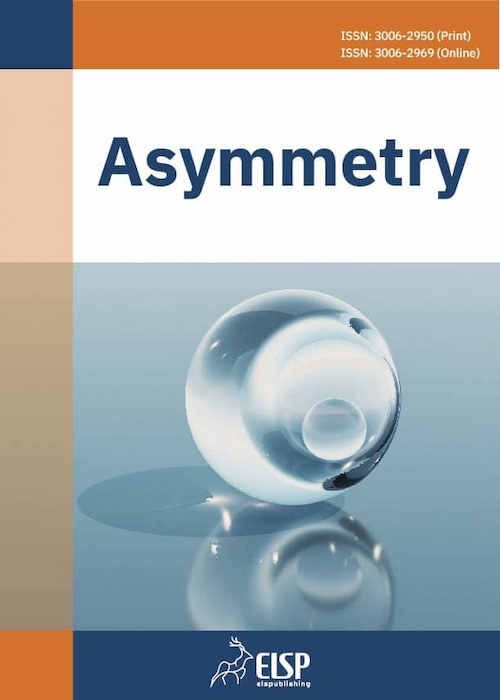AC会议论文平台致力于为国际学术会议组织者及参与者提供高效、稳定的全流程论文管理服务。我们支持论文提交、评审、收录和出版等环节,保障学术交流的严谨与顺畅。
学术会议
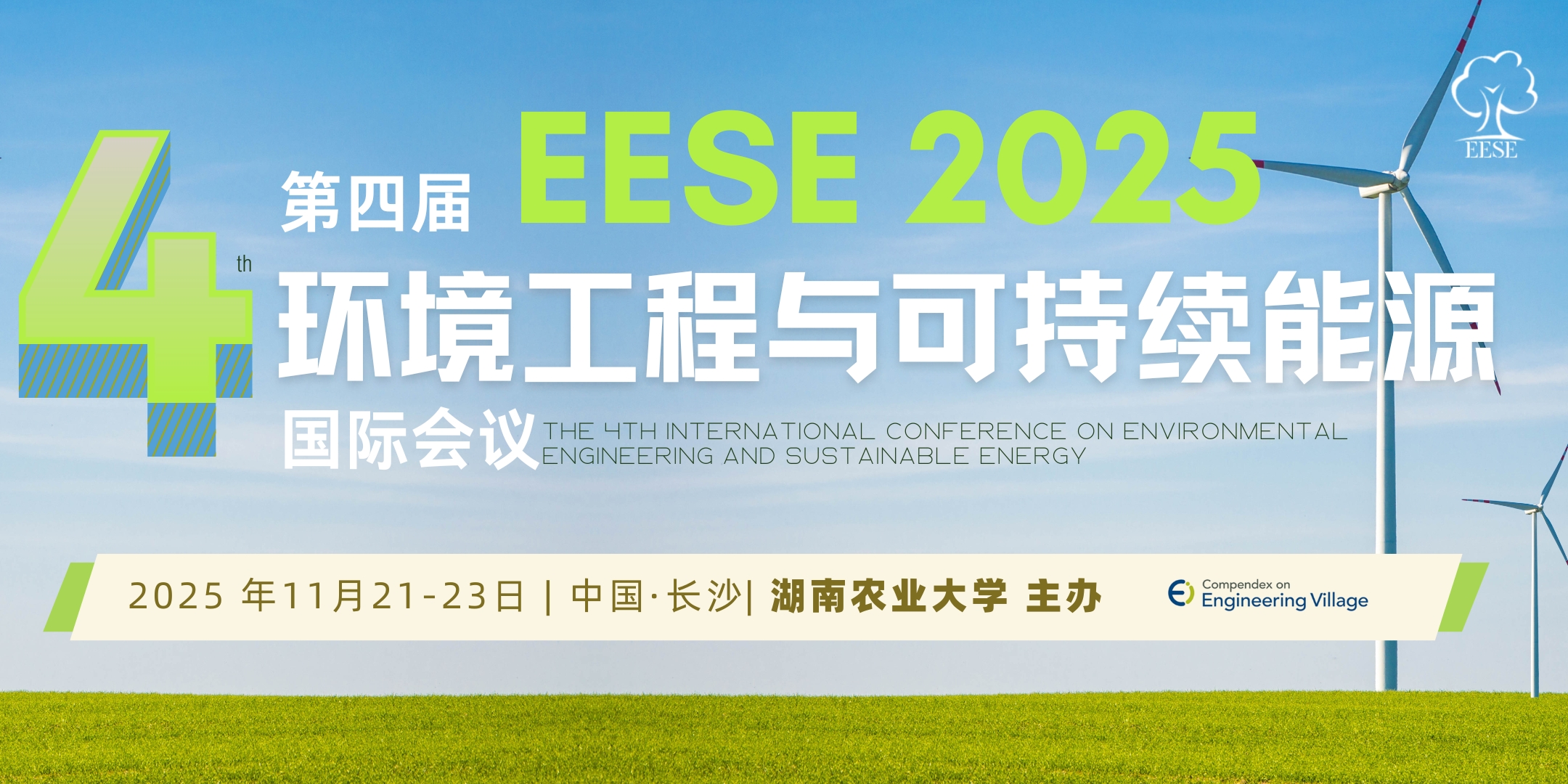



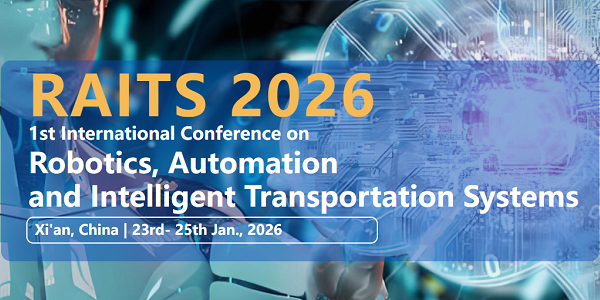
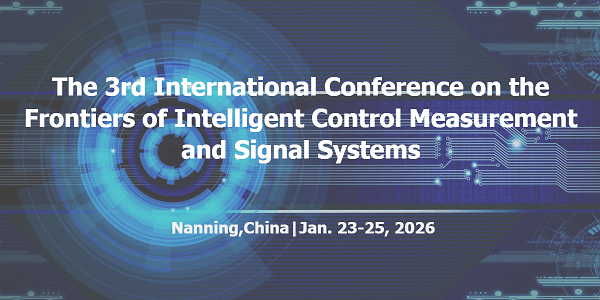
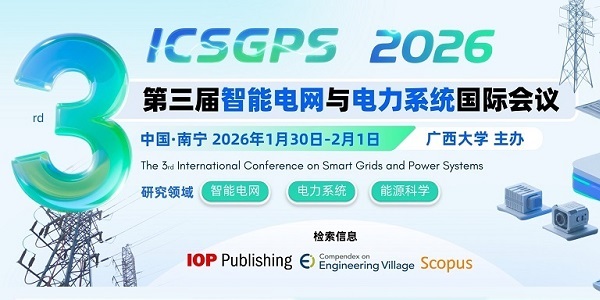
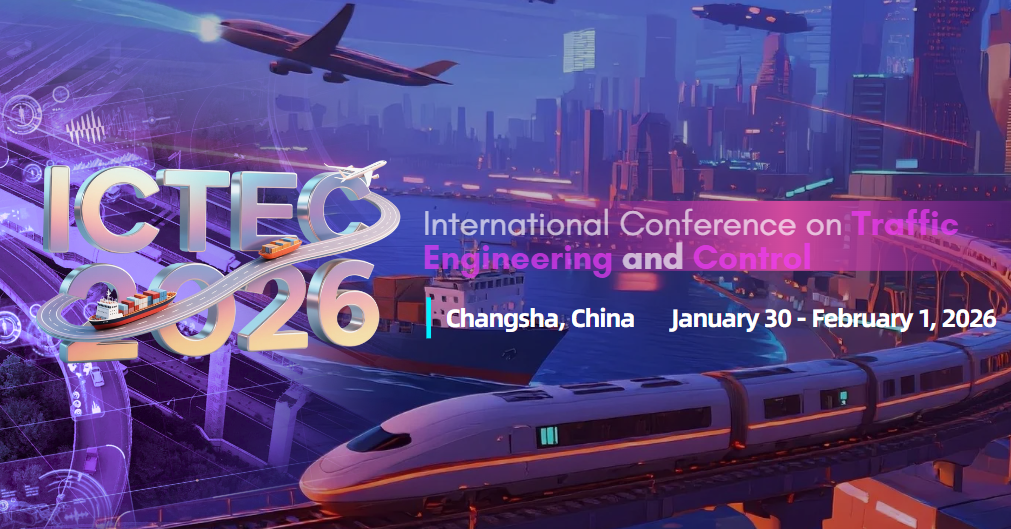


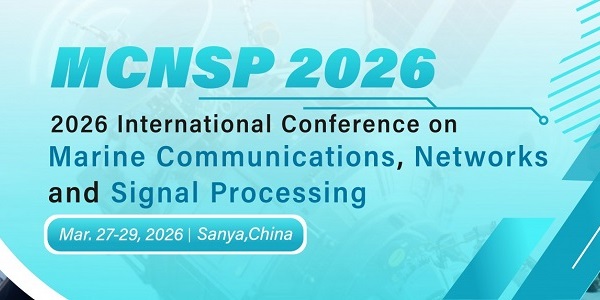
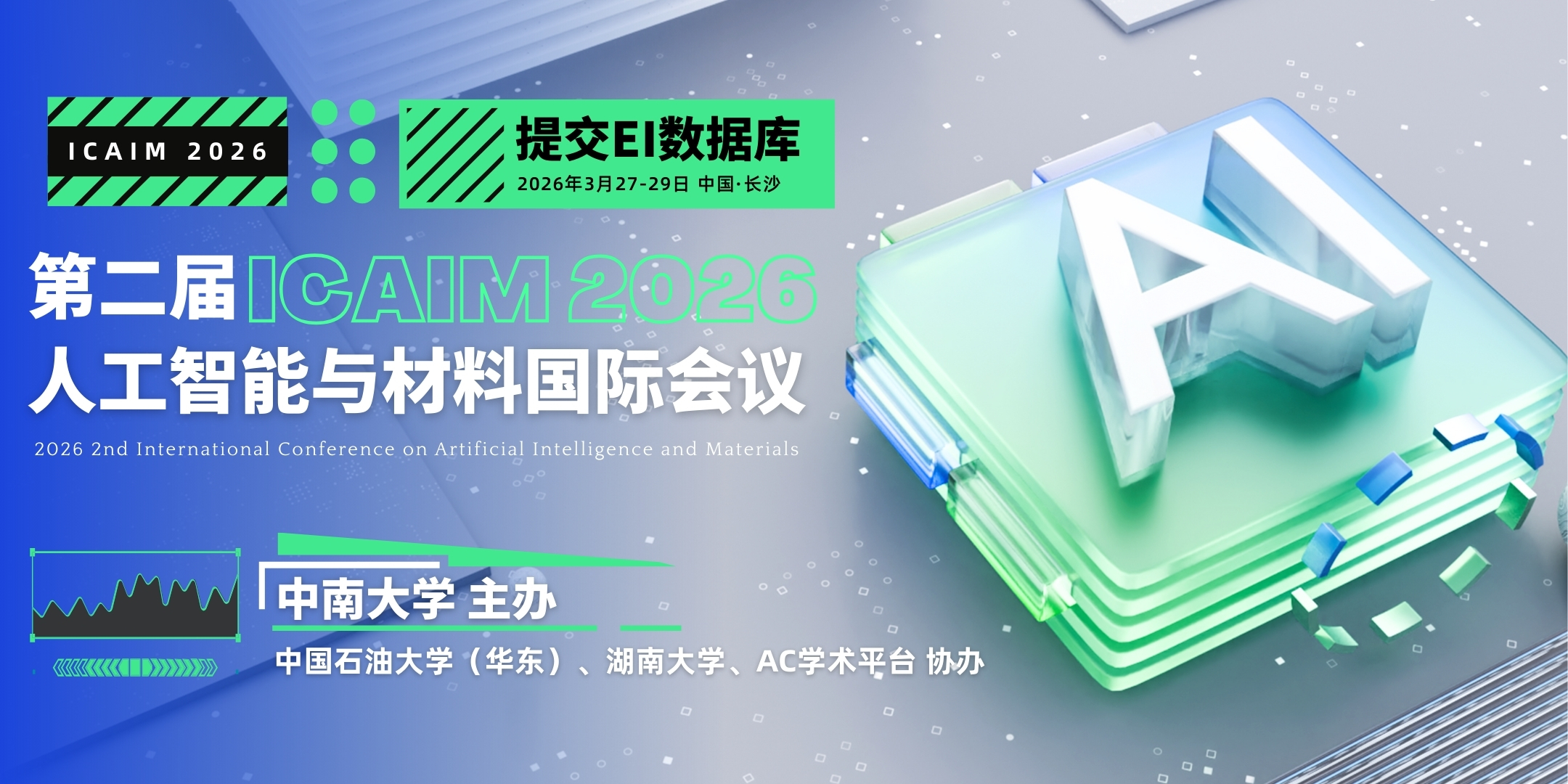
近期截稿会议











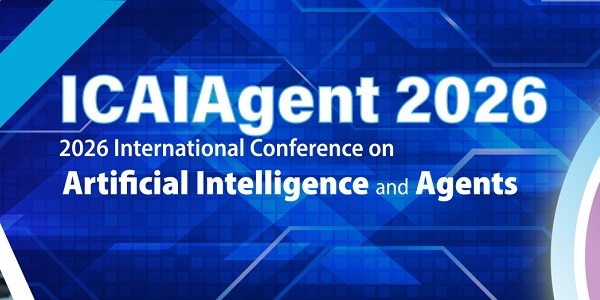
CCF推荐
| 名称 | 类别 | 年份 | 开会日期 |
|---|---|---|---|
| HPCA: High-Performance Computer Architecture | A类 | 2026 | 2026-01-31 |
| ASPLOS: Architectural Support for Programming Languages and Operating Systems | A类 | 2026 | 2026-03-22 |
| EuroSys: European Conference on Computer Systems | A类 | 2026 | 2026-04-13 |
| HiPEAC: International Conference on High-Performance Embedded Architectures and Compilers | B类 | 2026 | 2026-01-26 |
| IPDPS: International Parallel & Distributed Processing Symposium | B类 | 2026 | 2026-05-25 |
| HPDC: ACM Symposium on High-Performance Parallel and Distributed Computing | B类 | 2026 | 2026-07-13 |
| SPAA: ACM Symposium on Parallelism in Algorithms and Architectures | B类 | 2025 | 2026-07-28 |
| ASP-DAC: Asia and South Pacific Design Automation Conference | C类 | 2026 | 2026-01-19 |
| 名称 | 类别 | 年份 | 开会日期 |
|---|---|---|---|
| NSDI: Symposium on Networked Systems Design and Implementation | A类 | 2026 | 2026-05-04 |
| INFOCOM: IEEE International Conference on Computer Communications | A类 | 2026 | 2026-05-18 |
| MobiCom: ACM International Conference on Mobile Computing and Networking | A类 | 2026 | 2026-11-25 |
| SenSys: ACM Conference on Embedded Networked Sensor Systems | B类 | 2026 | 2026-05-11 |
| MobiSys: International Conference on Mobile Systems, Applications, and Services | B类 | 2026 | 2026-06-21 |
| WCNC: IEEE Wireless Communications & Networking Conference | C类 | 2026 | 2026-04-13 |
| ICC: IEEE International Conference on Communications | C类 | 2026 | 2026-05-24 |
| MSN: International Conference on Mobility, Sensing and Networking | C类 | 2026 | 2026-12-03 |
| 名称 | 类别 | 年份 | 开会日期 |
|---|---|---|---|
| NDSS: Network and Distributed System Security Symposium | A类 | 2026 | 2026-02-23 |
| EUROCRYPT: European Cryptology Conference | A类 | 2026 | 2026-05-10 |
| S&P: IEEE Symposium on Security and Privacy | A类 | 2026 | 2026-05-18 |
| PKC: International Workshop on Practice and Theory in Public Key Cryptography | B类 | 2026 | 2026-05-25 |
| IFIP WG 11.9: IFIP WG 11.9 International Conference on Digital Forensics | C类 | 2026 | 2026-01-05 |
| FC: Financial Cryptography and Data Security | C类 | 2026 | 2026-03-02 |
| DFRWS-EU: Digital Forensic Research Workshop | C类 | 2026 | 2026-03-23 |
| DFRWS EU: Digital Forensics Research Workshop EU | C类 | 2026 | 2026-03-24 |
| 名称 | 类别 | 年份 | 开会日期 |
|---|---|---|---|
| POPL: ACM SIGACT-SIGPLAN Symposium on Principles of Programming Languages | A类 | 2026 | 2026-01-11 |
| ICSE: International Conference on Software Engineering | A类 | 2026 | 2026-04-12 |
| ESEC/FSE: ACM Joint European Software Engineering Conference and Symposium on the Foundations of Software Engineering | A类 | 2026 | 2026-07-05 |
| OOPSLA: Conference on Object-Oriented Programming Systems, Languages, and Applications | A类 | 2026 | 2026-07-17 |
| ISSTA: The International Symposium on Software Testing and Analysis | A类 | 2026 | 2026-10-03 |
| VMCAI: International Conference on Verification, Model Checking, and Abstract Interpretation | B类 | 2026 | 2026-01-11 |
| SANER: IEEE International Conference on Software Analysis, Evolution and Reengineering | B类 | 2026 | 2026-03-17 |
| WICSA: IEEE International Conference on Software Architecture | C类 | 2026 | 2026-06-22 |
| 名称 | 类别 | 年份 | 开会日期 |
|---|---|---|---|
| SIGMOD: ACM Conference on Management of Data | A类 | 2026 | 2026-05-31 |
| CIDR: Biennial Conference on Innovative Data Systems Research | B类 | 2026 | 2026-01-18 |
| WSDM: International Conference on Web Search and Data Mining | B类 | 2026 | 2026-02-22 |
| ICDT: International Conference on Database Theory | B类 | 2026 | 2026-03-24 |
| EDBT: International Conference on Extending DB Technology | B类 | 2026 | 2026-03-24 |
| ECIR: European Conference on Information Retrieval | C类 | 2026 | 2026-03-30 |
| ESWC: Extended Semantic Web Conference | C类 | 2026 | 2026-05-10 |
| PAKDD: Pacific-Asia Conference on Knowledge Discovery and Data Mining | C类 | 2026 | 2026-06-09 |
| 名称 | 类别 | 年份 | 开会日期 |
|---|---|---|---|
| SODA: ACM-SIAM Symposium on Discrete Algorithms | A类 | 2026 | 2026-01-11 |
| STOC: ACM Symposium on Theory of Computing | A类 | 2026 | 2026-06-22 |
| LICS: Annual ACM/IEEE Symposium on Logic in Computer Science | A类 | 2026 | 2026-07-20 |
| CSL: Computer Science Logic | C类 | 2026 | 2026-02-23 |
| FMCAD: Formal Methods in Computer-Aided Design | C类 | 2026 | 2026-09-14 |
| 名称 | 类别 | 年份 | 开会日期 |
|---|---|---|---|
| IEEE VR: IEEE Conference on Virtual Reality and 3D User Interfaces | A类 | 2026 | 2026-03-21 |
| DCC: Data Compression Conference | B类 | 2026 | 2026-03-24 |
| ICASSP: International Conference on Acoustics, Speech, and Signal Processing | B类 | 2026 | 2026-05-06 |
| i3D: ACM Symposium on Interactive 3D Graphics | B类 | 2026 | 2026-05-15 |
| MMM: International Conference on Multimedia Modeling | C类 | 2026 | 2026-01-29 |
| 3DV: International Conference on 3D Vision | C类 | 2026 | 2026-03-20 |
| CVM: Computational Visual Media Conference | C类 | 2026 | 2026-04-10 |
| PacificVis: IEEE Pacific Visualization Symposium | C类 | 2026 | 2026-04-20 |
| 名称 | 类别 | 年份 | 开会日期 |
|---|---|---|---|
| AAAI: AAAI Conference on Artificial Intelligence | A类 | 2026 | 2026-01-20 |
| CVPR: IEEE Conference on Computer Vision and Pattern Recognition | A类 | 2026 | 2026-06-03 |
| ACL: Annual Meeting of the Association for Computational Linguistics | A类 | 2026 | 2026-07-02 |
| IJCAI: International Joint Conference on Artificial Intelligence | A类 | 2026 | 2026-08-15 |
| ICRA: IEEE International Conference on Robotics and Automation | B类 | 2026 | 2026-06-01 |
| ICAPS: International Conference on Automated Planning and Scheduling | B类 | 2026 | 2026-06-27 |
| ALT: International Conference on Algorithmic Learning Theory | C类 | 2026 | 2026-02-23 |
| AISTATS: International Conference on Artificial Intelligence and Statistics | C类 | 2026 | 2026-05-02 |
| 名称 | 类别 | 年份 | 开会日期 |
|---|---|---|---|
| CSCW: ACM Conference on Computer Supported Cooperative Work and Social Computing | A类 | 2026 | 2026-02-27 |
| CHI: ACM Conference on Human Factors in Computing Systems | A类 | 2026 | 2026-04-16 |
| PerCom: IEEE International Conference on Pervasive Computing and Communications | B类 | 2026 | 2026-03-16 |
| IUI: ACM International Conference on Intelligent User Interfaces | B类 | 2026 | 2026-03-23 |
| ICWSM: The International AAAI Conference on Web and Social Media | B类 | 2026 | 2026-05-27 |
| ECSCW: European Computer Supported Cooperative Work | B类 | 2026 | 2026-06-29 |
| DIS: ACM conference on Designing Interactive Systems | C类 | 2026 | 2026-06-13 |
| 名称 | 类别 | 年份 | 开会日期 |
|---|---|---|---|
| WWW: International World Wide Web Conferences | A类 | 2026 | 2026-04-13 |
| RECOMB: International Conference on Research in Computational Molecular Biology | B类 | 2026 | 2026-05-26 |
| ISMB: International Conference on Intelligent Systems for Molecular Biology | B类 | 2026 | 2026-07-12 |
| CogSci: Cognitive Science Society Annual Conference | B类 | 2026 | 2026-07-22 |
| EMSOFT: International Conference on Embedded Software | B类 | 2026 | 2026-10-04 |
| MICCAI: International Conference on Medical Image Computing and Computer-Assisted Intervention | B类 | 2026 | 2026-10-04 |
| ICIC: International Conference on Intelligent Computing | C类 | 2026 | 2026-07-22 |
| AMIA: American Medical Informatics Association Annual Symposium | C类 | 2026 | 2026-11-07 |
学术期刊
学术动态

12-18
星城冬韵暖,湘江涌智潮。
12月13日,2025年深度学习与神经网络国际会议(DLNN 2025)在湖南长沙隆重开幕。本次会议由国际计算机与电子工程学会、海南师范大学联合主办,湖南农业大学、湖南工业大学共同协办,湖南省人工智能学会、湖南省计算机学会、湖南省物联网学会、ESBK国际学术交流中心以及AC学术中心共同支持。
会议旨在汇聚全球深度学习、神经网络及人工智能相关领域的顶尖学者、业界专家与青年创新人才,围绕算法突破、模型创新与前沿应用展开深度对话,共同推动智能计算的理论发展与产业融合。

会议现场合照
13日上午,会议在长沙美年华美达酒店会议厅正式启幕。来自全球各地的数百位专家学者及青年学子齐聚一堂,共同见证了这一学术盛会的开启。大会主席兼协办方代表、湖南农业大学李长云教授发表了开幕和欢迎致辞,开幕式由西华大学电气与电子信息学院副院长王涛教授主持。

西华大学电气与电子信息学院副院长王涛教授主持会议
本次会议主会场邀请了3位学者作主旨报告,1位学者作特邀报告,分别是:Jaehong Lee,韩国世宗大学教授、前副校长;王森章,中南大学教授;刘新旺,国防科技大学教授、国家杰青&优青;刘小峰,河海大学院长。

韩国世宗大学Jaehong Lee教授作主旨报告

中南大学王森章教授作主旨报告
其后,由北京科技大学曾广平教授主持院长论坛,会议邀请了下列嘉宾进行分享讨论:李长云,湖南农业大学信息与智能科学技术学院院长;林海军,湖南师范大学工程与设计学院院长;王涛,西华大学电气与电子信息学院副院长;报告与讨论涵盖人工智能、计算力学、最优算法、大语言模型等相关领域,现场互动积极,专家与听众展开了深入的学术探讨。

院长论坛
当日下午,大会进行了分会场报告,分别由福州大学陈宇韬副教授和西北工业大学张号逵教授主持。来自多所高校和科研单位的学者分享了自己的最新研究进展。报告内容丰富,交流深入,进一步增强了学术界的互通与合作。

分会场现场
晚上,大会举行了颁奖晚宴,对会议支持单位以及在会议投稿、论坛组织及报告学者中表现突出的组织和个人进行了现场表彰。颁发了多个奖项,以鼓励青年学者的创新探索和卓越表现。

晚宴颁奖现场
在活跃融洽的氛围中,主办方表达了对下一届DLNN会议的美好展望,期待在未来构建更高层次的国际交流平台,进一步推动国内外相关领域的创新突破与跨界融合,共迎智能科技发展的新篇章。

12-17
2025年12月12日-14日,IEEE第三届大数据与数据挖掘国际会议在衡阳隆重召开。本次会议由IEEE中国联合会、南华大学、中南大学联合主办,湖南工学院、爱迩思出版社(ELSP)、ESBK国际学术中心、AC学术平台协办,共同探讨大数据技术、数据挖掘方法与产业应用的前沿趋势。

会议现场合照
12月13日上午,大会正式开幕。南华大学周青芝副校长代表主办方致欢迎辞,对出席现场的学者们表示真诚欢迎。他指出,大数据与数据挖掘正处于快速发展与深度渗透阶段,正在重塑科研范式与产业结构。南华大学将继续在数据科学、人工智能等领域加强学科建设,通过举办高质量国际会议推动创新生态的形成。随后,大会主席中南大学龙军教授向所有主协办单位表达诚挚感谢,强调本次会议不仅是学术交流的平台,更是产学研融合的重要契机。会上,组委会还对各主协办单位的高度支持表示感谢,并期待通过这一平台加强产学研联动、推动应用落地。

▲南华大学周青芝副校长致欢迎辞

▲中南大学龙军教授开幕致辞
本次主会场共有三场主旨报告,一场线上特邀报告,他们分别是国家杰出青年科学基金获得者,中国科学院自动化研究所曹志冬教授;教育部长江学者,北京大学王亚沙教授;山东大学软件学院院长崔立真教授。此外,北京工业大学Azhar Imran副教授也在线上做特邀报告。

▲中国科学院自动化研究所曹志冬教授作主旨报告

▲北京大学王亚沙教授作主旨报告

▲山东大学崔立真教授作主旨报告
上午的主会场聚焦学术对话,专门设立院长论坛。与会专家齐聚一堂,围绕三大核心议题展开深度研讨,凝聚行业共识、碰撞思想火花:一是如何打破学科壁垒,推动数据思维与 AI 技术深度融入理、工、文、医、商等各类专业,实现跨学科融合赋能;二是如何在坚守学术诚信底线与鼓励创新突破之间寻求平衡,明确 AI 工具在教学与科研中的使用边界、规范应用路径;三是面对人工智能带来的全球性挑战(如算法偏见、技术滥用等),高校间应如何深化协同合作,凝聚合力共同引领国际 AI 领域的话语权与发展方向。

院长论坛现场
当日下午,大会在分会场开展了多场特邀报告,口头报告。参会者积极交流观点,青年学者表现活跃。


分论坛现场
在当晚举行的大会颁奖晚宴上,组委会公布了多项会议证书与奖牌,表彰了在会议中作出优异贡献的学者以及志愿者们,他们为会议的顺利举行提供了坚实保障。

颁奖晚宴现场
在全体与会专家学者的共同努力下,本届大数据与数据挖掘国际会议圆满落幕。组委会表示,在未来将继续汇聚国内外优质学术资源,推动学科交叉融合与科研合作不断深化,期待在下一届会议上与各界同仁再次相聚,共同推动大数据领域的持续发展。

12-16
12月12日至14日,由湖南第一师范学院主办,CCF长沙分部联合主办,中国机电一体化技术应用协会指导,湖南省机器人与人工智能推广学会、ESBK国际学术交流中心、AC学术平台共同支持的智能技术与先进制造国际会议(ITAM 2025)在湖南长沙顺利召开。来自国内外高校、科研院所及产业界的专家学者、青年研究者齐聚星城,分享前沿成果、研判技术趋势,推动智能技术与先进制造的产学研深度融合。

12月13日上午,ITAM 2025在长沙隆重开幕。首先,由湖南第一师范学院电子信息学院院长满君丰教授主持,大会主办方湖南第一师范学院副校长刘丽群教授致开幕辞,对会议的顺利召开表示祝贺,并向给予支持的各方专家学者致以诚挚感谢。随后,大会主席湖南第一师范学院智能制造学院院长曾进辉教授致欢迎辞,对远道而来的各位嘉宾表示热烈欢迎,并介绍了学院在智能制造领域的最新发展情况。

▲湖南第一师范学院电子信息学院满君丰院长主持大会

▲湖南第一师范学院刘丽群副校长致开幕辞

▲湖南第一师范学院智能制造学院曾进辉院长致欢迎辞
本次大会汇聚了智能技术与先进制造领域的多位知名专家学者。上午的主会场邀请了中南大学的王雅琳教授(中南大学自动化学院院长、长江学者特聘教授)和蒋朝晖教授(长江学者特聘教授)、浙江理工大学叶伟教授(国家杰青李秦川教授团队)和北京航空航天大学赖李媛君教授(国家杰青任磊教授团队)分别作主旨报告,深入剖析了人工智能、数字孪生、工业大数据等前沿技术在制造业中的融合应用与发展前景。

▲中南大学蒋朝晖教授作主旨报告

▲中南大学王雅琳院长作主旨报告

▲浙江理工大学叶伟教授作主旨报告

▲北京航空航天大学赖李媛君教授作线上主旨报告
除主会场报告外,当日下午大会同步举行特邀学者报告和分会场交流,共计三十余场学术报告。与会学者围绕智能系统与应用、智能机器人与自主系统、增材制造、微米/纳米制造、智能制造与数字孪生、工业物联网等热点议题展开深入研讨。来自中南大学、浙江大学、华中科技大学、西安交通大学等多所高校和科研单位的报告人分享了最新研究进展,现场交流热烈,进一步促进了学术界与产业界的互通与合作。


▲分会场一学者报告

▲分会场一合照


▲分会场二学者报告

▲分会场二合照

▲专题论坛专家学者报告

▲专题论坛合照
12月13日晚,大会举行颁奖晚宴,组委会对在会议中表现突出的单位和个人进行了现场表彰,旨在鼓励青年科研人才成长,培育未来智能制造领域的中坚力量。

颁奖晚宴合照
ITAM 2025不仅是展示智能技术与先进制造科研成果的重要平台,更是推动技术转化与学术合作的关键契机。随着人工智能、工业互联网、数字孪生等技术的迅猛发展,传统制造业正加速向智能化、绿色化、服务化方向转型升级。主办方表示,ITAM 2025的召开,为全球学者与产业界搭建了高水平的国际学术交流平台,促进了智能技术与先进制造领域的深度融合与协同创新。

12-15
2025年12月13日,由邵阳学院、湖南省计算机学会机器视觉与医学影像专业委员会主办,中南大学、AC学术平台联合协办的第一届机器学习与人工智能应用国际会议(MLAIA 2025)在邵阳学院盛大开幕。本次会议汇聚来自全球机器学习与人工智能领域的知名学者与青年才俊,围绕机器学习、人工智能应用等多个研究热点展开深入交流。

▲大会现场合照
13日上午,大会在邵阳学院润德楼报告厅主会场隆重开幕。主办方代表邵阳学院党委委员、副校长蒋剑平首先作欢迎致辞,邵阳学院信息科学与工程学院院长邹北骥教授作开幕致辞,代表们都在发言中肯定了本次会议在学术交流和科技合作方面的重要作用,并对莅临现场及线上参会的国内外嘉宾表示热烈欢迎与诚挚感谢。

▲邵阳学院蒋剑平副校长作欢迎致辞

▲邵阳学院信息科学与工程学院院长邹北骥教授作开幕致辞
本次会议主会场邀请了四位著名学者作主旨报告,他们分别是国家杰青、南京邮电大学肖甫教授,国家杰青、国防科技大学徐凯教授,中南大学奎晓燕教授在上午作主旨报告,欧洲工程院院士,IEEE Fellow法国里昂中央理工大学陈立明教授下午在法国与学者们开展线上连线报告。报告涵盖区块链与信息安全等多个领域,展示了全球机器学习、人工智能领域的最新研究成果与发展趋势。现场反响热烈,互动积极,专家与听众展开了深入的学术探讨。

▲肖甫教授作主旨报告

▲徐凯教授作主旨报告

▲奎晓燕教授作主旨报告

▲陈立明教授作线上主旨报告
当日下午,大会还设立了主题分会场。来自多所高校和科研单位的报告人分享了自己的最新研究进展。报告内容丰富,交流深入,进一步增强了海内外学术界的互通与合作。
晚上,大会举行了颁奖晚宴,对在会议投稿、学者报告与学生口头报告中表现突出的作者进行了现场表彰。颁发了多个奖项,以鼓励青年学者的创新探索和卓越表现。
在热烈融洽的交流氛围中,会议主办方表达了对下一届MLAIA会议的美好展望,希望未来能继续搭建高水平国际交流平台,推动机器学习、人工智能等相关领域的创新发展与多元合作。
提高SCI论文发表效率是一个系统性的过程,需要从研究设计、写作、投稿到回复审稿意见等各个环节进行优化。以下是一些关键策略,可以帮助你更高效地发表SCI论文:
一、研究前期准备
1. 选题与创新性
- 选择有潜力的研究方向,关注领域内尚未解决的重要问题。
- 通过文献综述明确研究的创新点(新方法、新理论、新数据等)。
- 确保研究设计严谨,数据可靠,避免因实验缺陷导致后期拒稿。
2. 目标期刊早规划
- 在写作前初步筛选3-5个目标期刊,参考其近期发表的类似文章。
- 仔细阅读期刊的投稿指南(格式、字数、图表要求等),避免因格式问题被退回。
二、论文写作阶段
1. 结构化高效写作
- 遵循“IMRaD”结构(Introduction, Methods, Results, Discussion),保持逻辑清晰。
- 先完成图表和结果部分,再撰写方法、讨论和引言。
- 讨论部分需突出研究的创新性和局限性,并与文献紧密结合。
2. 语言与表达
- 尽量使用简洁、准确的学术英语,避免复杂句式。
- 若英语写作有困难,可考虑使用专业润色服务或求助母语者合作者。
3. 引用策略
- 合理引用目标期刊及相关领域的文献,体现对领域的了解。
- 避免过度自引或遗漏关键文献。
三、投稿与审稿过程
1. 投稿材料完整性
- 准备高质量的Cover Letter,简要说明研究意义、创新点及与期刊的契合度。
- 认真撰写推荐审稿人名单(避免利益冲突),并可建议回避的审稿人。
2. 预印本与同行反馈
- 可在arXiv、bioRxiv等平台发布预印本,提前获取同行意见。
- 投稿前请导师或同事审阅,修正潜在问题。
3. 应对审稿意见
- 收到审稿意见后,逐条回复,保持礼貌和专业。
- 对合理建议充分修改,对不认同的意见提供有理有据的解释。
- 修改稿中可用高亮或批注标注修改处,方便审稿人查阅。
四、时间管理与心态调整
1. 合理规划时间
- 设定写作、投稿、修改的截止日期,避免拖延。
- 如被拒稿,尽快根据审稿意见修改并转投其他期刊。
2. 保持耐心与韧性
- SCI发表周期通常较长(3-12个月),需做好心理准备。
- 拒稿是常见现象,将其视为提升论文质量的机会。
五、其他实用技巧
1. 借助工具
- 使用文献管理工具(EndNote, Zotero)高效管理参考文献。
- 利用语法检查工具(Grammarly, Hemingway)改善语言表达。
2. 合作与网络
- 与领域内学者合作,提升研究质量和影响力。
- 参加学术会议,展示研究并获取反馈。
六、避免常见错误
- 数据统计方法不当或解释不充分。
- 夸大结论或忽视研究的局限性。
- 忽视期刊格式要求(图表分辨率、参考文献格式等)。
流程图:高效发表SCI论文的关键步骤
研究设计 → 文献调研 → 写作规划 → 初稿撰写 → 同行反馈
↓
目标期刊选择 → 格式调整 → 投稿材料准备 → 提交
↓
应对审稿意见 → 修改稿提交 → 接受发表
通过系统化规划、精细化的写作与投稿策略,以及积极应对审稿过程,你可以显著提升SCI论文的发表效率。关键是将发表视为一个完整的项目来管理,而非仅仅关注写作环节。
对于绝大多数非英语母语的科研工作者来说,专业的SCI论文润色不仅“有帮助”,而且在很多情况下是“至关重要”的。但这并不是一个简单的“是或否”的问题,关键在于理解润色“如何”以及“在什么层面上”提供帮助。
润色能提供的核心帮助:
1. 突破语言障碍,让审稿人专注于科学内容
- 这是最根本的作用。如果论文语法错误百出、用词不当、句式混乱,审稿人(尤其是忙碌的领域专家)会感到阅读吃力,甚至烦躁。
- 后果:他们会将大量注意力从你的科学发现、创新性和逻辑上移开,转而挑剔语言问题。这可能导致他们低估你工作的价值,或直接以“语言质量差”为由建议拒稿。
- 润色的作用:消除这些干扰,让审稿人顺畅地理解你的思想,专注于评估研究的科学质量。
2. 提升学术表达的准确性和专业性
- 科研写作有特定的惯例和用语。润色编辑(尤其是具有相关学科背景的)可以:
- 使用更精确、地道的学术词汇(例如,区分 “show”, “indicate”, “demonstrate”, “reveal” 的细微差别)。
- 优化句式结构,使逻辑关系(如因果、对比、转折)更清晰。
- 确保时态、语态(主动/被动)使用符合学术规范。
- 统一全文术语、缩写和格式。
3. 提高论文的清晰度和可读性
- 即使是正确的句子,也可能冗长、晦涩。润色可以重组句子,使其更简洁、有力,让论点更突出,数据呈现更明了。这能显著提升读者的阅读体验。
4. 避免误解和歧义
- 不地道的表达可能导致技术细节被误解。一个词或一个句子的歧义,可能让审稿人对你的方法或结论产生质疑。专业润色能消除这些潜在风险,确保你想表达的和你实际写出来的完全一致。
5. 节省作者的时间和精力
- 反复修改语言对研究者来说是巨大的时间消耗。将语言问题交给专业人士,你可以更专注于应对审稿中的科学问题或进行后续研究。
润色无法做到的(明确界限):
1. 不能弥补研究的科学缺陷:如果实验设计有问题、数据不扎实、创新性不足,再好的语言包装也无法让论文被顶级期刊接受。润色是“锦上添花”,而非“雪中送炭”。
2. 不能改变论文的核心逻辑和结构:润色主要在句子和段落层面优化。如果整体论文结构(引言-方法-结果-讨论)混乱,论证逻辑不连贯,这需要作者自己或导师进行实质性修改。
3. 不能代替作者的最终确认:润色后,作者必须仔细通读全文,确保所有修改都准确反映了你的本意,没有在修改中引入技术性错误。
如何最大化润色的效益?
- 选择专业的润色服务:优先选择提供学科对口编辑的服务。一个熟悉你领域的编辑能更好地理解你的内容,做出更专业的措辞修正。
- 明确服务类型:了解是基础润色(纠正语法、拼写)还是高级润色/科学编辑(优化表达、逻辑、语气和整体可读性)。后者价值更高。
- 在投稿前进行:最好在首次投稿前就进行润色,争取最好的第一印象,避免因语言问题直接被拒。
- 将润色视为学习过程:仔细对比润色前后的版本,这是提高自己学术写作能力的绝佳机会。
结论
对于SCI论文投稿,专业润色是一项高回报的投资。它能显著降低因语言问题被拒稿的风险,加快审稿进程,并最终提升论文发表的成功率。它的核心价值在于“为你的科学成果提供一个清晰、专业、无障碍的展示窗口”。
因此,如果你的母语不是英语,或者对自己的英文写作信心不足,寻求专业的SCI论文润色服务是非常明智且推荐的做法。这在国际学术界已成为一个普遍且受认可的步骤。
SCI论文投稿是许多研究者面临的挑战,过程中常遇到一些共性问题。以下梳理了几点常见问题及建议,供您参考:
一、投稿前的常见问题
1. 期刊选择不当
- 问题:与期刊范围不符、影响因子不匹配(过高或过低)、审稿周期过长。
- 建议:仔细阅读期刊的“Aims and Scope”,参考已发表类似文章;利用期刊匹配工具(如JANE, Elsevier Journal Finder);关注期刊的审稿速度、录用率等指标。
2. 稿件格式不规范
- 问题:未严格按照期刊要求调整格式(如字数、图表格式、参考文献引用风格等)。
- 建议:下载期刊最新投稿指南(Guide for Authors),使用模板或LaTeX格式(如有);仔细检查图表分辨率、文件格式等细节。
3. 语言质量问题
- 问题:语法错误、表达不专业、逻辑不清,导致编辑或审稿人难以理解。
- 建议:可先使用Grammarly等工具自查;如条件允许,寻求英语母语研究者或专业润色服务协助;避免机器翻译痕迹。
4. 伦理与版权问题
- 问题:未披露利益冲突、缺乏伦理审批、图表未经授权使用、一稿多投或重复发表。
- 建议:确保所有作者知情并同意投稿;保留伦理审批文件、数据使用许可;使用原创图表或注明授权;严格遵守“一次一投”原则。
二、投稿过程中的问题
1. 投稿信(Cover Letter)不专业
- 问题:内容泛泛,未突出论文创新性及与期刊的契合度。
- 建议:简明扼要说明研究意义、核心发现、与期刊读者的相关性;推荐审稿人(如有要求);声明未一稿多投。
2. 推荐审稿人信息不准确
- 问题:推荐不相关领域专家、提供错误联系方式。
- 建议:选择近期发表过相关论文的活跃学者;核实邮箱及机构信息;避免推荐存在利益冲突的同行。
3. 投稿系统操作失误
- 问题:上传错误版本文件、遗漏必要材料(如摘要、作者信息)。
- 建议:上传前确认文件版本;逐步检查系统要求;保存投稿确认邮件及稿件编号。
三、投稿后的常见困扰
1. 对审稿状态不了解
- 问题:长时间停滞于某一状态(如Under Review),不知是否该催稿。
- 建议:先查看期刊平均审稿周期;若远超通常时间,可礼貌邮件询问(一般建议至少2-3个月后)。
2. 收到审稿意见后不知所措
- 问题:面对负面或尖锐意见时情绪化回应;未逐条回复修改建议。
- 建议:保持冷静,将意见分类整理;逐条回复并注明修改位置(可附修改标记稿);对于不同意的意见,礼貌解释理由。
3. 被拒稿后处理不当
- 问题:直接放弃或不做修改转投他刊。
- 建议:认真分析拒稿原因(如创新性不足、数据缺陷);针对性修改后改投更合适期刊;考虑转投“友好”期刊(如从高影响力期刊转投专业领域期刊)。
四、其他注意事项
- 作者署名与贡献:确保所有贡献者被列为作者,并明确贡献;避免“搭车”署名或遗漏关键贡献者。
- 数据共享政策:许多期刊要求公开原始数据,投稿前需将数据上传至公开存储库(如Figshare, Dryad)。
- 开放获取(Open Access)选择:如选择OA,提前了解费用(APC)及机构资助政策。
小结
投稿过程需要耐心与细致。建议在投稿前系统规划,从期刊选择到格式打磨都严格遵循要求;投稿后保持耐心,理性对待审稿意见。良好的学术沟通能力和严谨的态度,能有效提升稿件处理效率与成功率。
撰写高水平的CPCI(原ISTP)会议论文是一个系统性的工程,需要清晰的策略和严谨的执行。作为你的学术伙伴,将为你梳理出一套从构思到投稿的完整行动指南。
首先,我们需要明确一个核心认知:CPCI收录的会议论文,其核心价值在于展示具有时效性的创新研究或重要进展,它更注重研究的“新颖性”和“完整性”,而非如期刊般要求极高的理论深度或全面性。
以下是为你打造的“五步法”路线图:
第一步:奠基——选题与创新(最关键的一步)
这是决定论文上限的一环。
1. 精准对标会议:深入研究目标会议的征稿范围(CFP)。阅读往届会议论文集,把握其偏好的主题类型、研究方法和行文风格。
2. 寻找创新缺口:
方法新:针对已有问题,提出更高效、更精准的新算法、新模型或新流程。
视角新:将其他领域成熟的理论或工具,创新性地应用到本领域的老问题上。
发现新:通过实验或模拟,首次报道了某个有意义的现象或数据规律。
应用新:将前沿技术落地到一个全新的具体应用场景中,并验证其有效性。
3. 明确贡献点:用一句话清晰概括:“本文首次提出了/改进了X方法,在Y问题上实现了Z效果,解决了以往的A不足。”这是贯穿全文的灵魂。
第二步:构建——论文结构与写作
CPCI会议论文结构紧凑,通常为6-8页。务必遵守会议模板格式。
标题:应具体、包含关键词,直接反映贡献(如“基于X的Y方法在Z中的应用与优化”优于“关于Z问题的研究”)。
摘要:独立成文,是审稿人的首要判断依据。采用“问题—方法—结果—结论”四段式:
1. 背景与问题的重要性。
2. 本文方法的概述(创新点)。
3. 主要实验结果(关键数据)。
4. 结论及意义。
引言:讲好一个“故事”。
1. 从宏观背景引出具体研究问题。
2. 精炼评述最相关的现有工作(文献综述),明确指出其局限或空白(这是你研究的立足点)。
3. 自然引出本文的研究目标和主要贡献。
4. 清晰说明全文的结构安排。
方法论:确保可复现性。详细描述你的方法、模型、实验设计、数据集、参数设置和评价指标。使用公式、算法流程图或结构框图来增强清晰度。
实验与结果分析:论文的“证据”部分。
实验设计合理:与基线方法进行公平对比。
结果呈现直观:多用高质量的图表(曲线图、柱状图、表格),并确保图表标题、坐标轴、图例清晰易懂。
分析深入:不仅仅是罗列数据,要解释“为什么”——为什么你的方法更好?在什么情况下会失效?结果说明了什么内在规律?
结论与未来工作:
结论:系统性地总结全文工作,重申核心贡献,但不要简单重复摘要。
未来工作:诚恳地指出当前研究的局限性(如数据规模、假设条件),并提出1-3个具体、可行的后续研究方向。
参考文献:规范、完整,多引用近3-5年及目标会议本身的文献。
第三步:打磨——提升质量的“精加工”
1. 语言与逻辑:语言准确、简洁、客观。避免口语化、模糊词(如“maybe”)。确保段落间、句子间逻辑连贯,使用恰当的连接词。
2. 视觉呈现:图表是第二语言。确保每张图、每个表都有明确的信息承载,且印刷后仍清晰可辨。使用专业工具(如Visio, TikZ, Python matplotlib)制图。
3. 反复修改与同行评审:
自我冷却:初稿完成后放置几天,再以审稿人视角重新审视。
同行评议:务必请导师、同学或同行预读,重点让他们指出“哪里没看懂”、“逻辑哪里跳跃了”。
语法检查:使用Grammarly等工具检查基本语法,但不可完全依赖。
第四步:冲刺——投稿与回应
1. 选择审稿人:如系统允许,可推荐熟悉你研究领域、公正的审稿人,也可列出应避免的利益冲突方。
2. 回复审稿意见:这是二次机会,态度决定一切。
逐条、礼貌回复:对每条意见,先表示感谢,再明确说明修改位置(第几页第几行)。
区分类型:对于补充实验的要求,尽力满足;对于误解,耐心解释澄清;对于合理的批评,诚恳接受并修改。
修改标记:在修订稿中用高亮或颜色标出所有修改处。
心法与避坑指南
早做准备:给自己留出充足的写作、修改和意外缓冲时间。
聚焦一点:切忌贪大求全,将一个“小而深”的创新点讲透彻,远比一个“大而空”的框架更有说服力。
证据链完整:从问题提出、方法设计、实验验证到结果分析,必须形成逻辑闭环。
遵守学术道德:严禁抄袭、一稿多投、数据造假。正确引用他人工作。
最后,请将这篇论文的撰写视为一次与全球同行进行高效、专业对话的过程。你的目标是:让审稿人在有限时间内,清晰无误地理解你工作的价值。
合作伙伴


